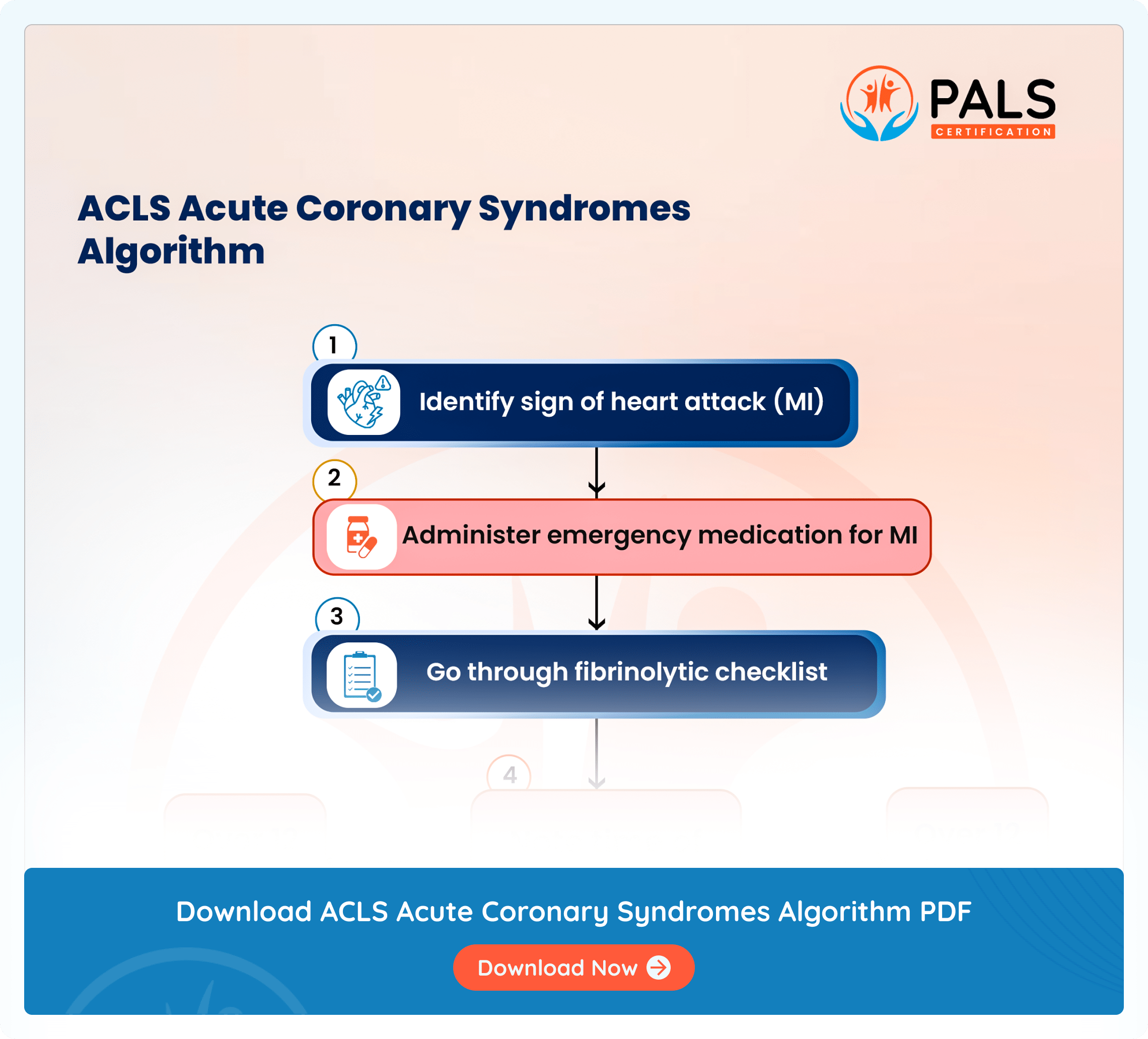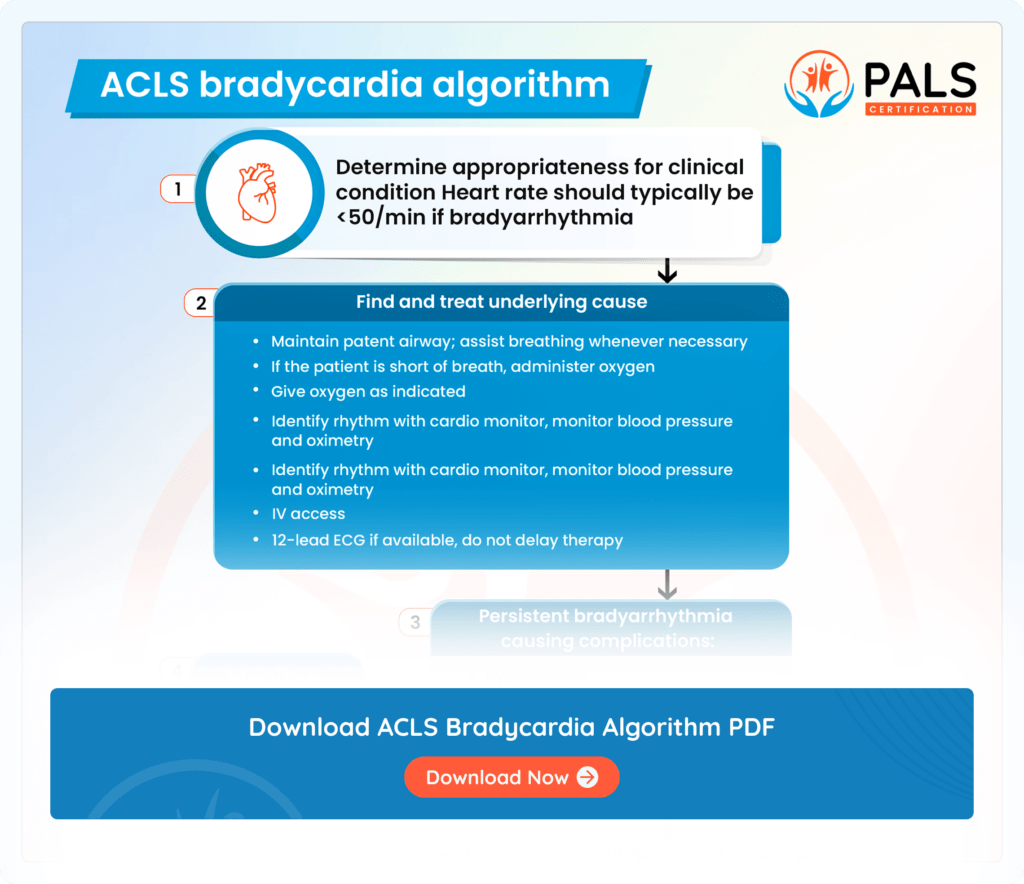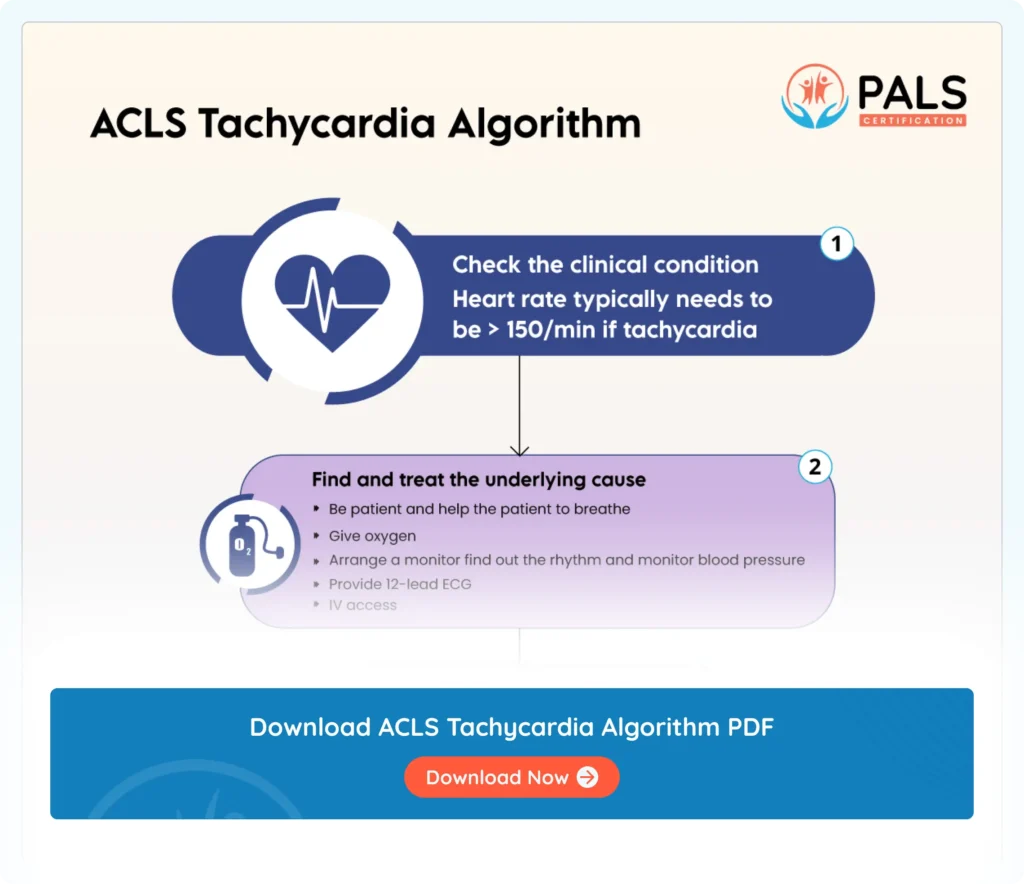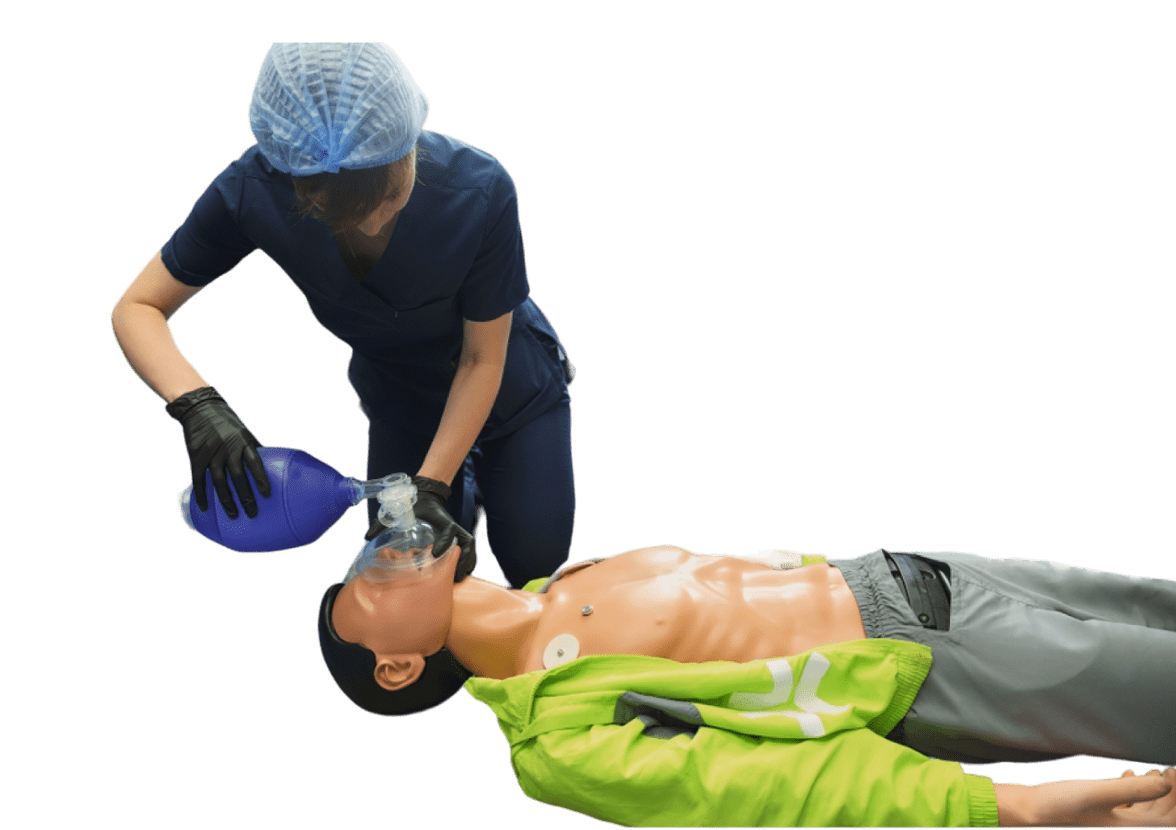- 4.0 - 8.0 CE Credit Hours
- For Pediatric Responders
- Includes Videos, Megacode Scenarios, Practice Tests & More
- FREE BLS Included
The ACLS Acute Coronary Syndromes Algorithm offers a structured framework for healthcare providers to manage patients experiencing acute coronary syndromes (ACS), such as unstable angina and myocardial infarction. This algorithm guides the assessment, diagnosis, and treatment of ACS, prioritizing timely interventions to minimize myocardial damage and improve patient outcomes. Emphasizing a coordinated and multidisciplinary approach, it enables healthcare providers to optimize care for patients with ACS, ultimately reducing the risk of death associated with these serious cardiac conditions

Online PALS certification and recertification
- Compliant with ECC and OSHA guidelines
- Nationally accepted course
- Available anytime, anywhere
- Earn CE credit hours
$199.00

Details of the Flowchart
- Sign Identification: A person experiencing a myocardial infarction (heart attack) may present with the following symptoms: chest pain/discomfort, nausea, heartburn, pain radiating to left arm, shortness of breath, and/or jaw pain. However, symptoms can vary person-to-person and between genders so familiarize yourself with typical and atypical presentations of patients experiencing MI.
- Give Medication: Once MI is confirmed, you must administer the proper medication, usually via injection.
- Fibrinolytic Checklist: Quickly review the checklist to take down the patient’s medical history, trauma, accidents, or past injuries.
- Time: You must note the time of onset of symptoms and ensure you take the following steps accordingly.
- <12 Hours: If the symptoms started less than 12 hours, you must begin the reperfusion protocol and deliver adjunctive therapy.
- >12 Hours: This time is critical, and the patient will need immediate hospital administration and care.
- Adjunctive Therapy: In either situation, the final step is delivering inhibitors or beta blockers to save the patient’s life.
Highlights of the Graph
- Signs of MI: The common signs include pain in the chest. This pain travels to the jaw, arm, and back. The patient could experience vomiting and sweating. Some people also experience shortness of breath.
- Medication for MI: Aspirin is one of the most common medications for MI. You may administer morphine, if required.
- Reperfusion Protocol: You must follow this protocol to open the blocked artery. The medical team may perform an angioplasty or an intravenous thrombolysis.
- Adjunctive Therapy: You may need this therapy if you are suffering from MI. It includes beta-adrenergic blocking agents, enzyme inhibitors, and other chemicals.
Available Courses
PALS Certification and Recertification Online
ACLS Certification and Recertification Online
- 4.0 - 8.0 CE Credit Hours
- For Healthcare Professionals
- Includes Videos, Megacode Scenarios, Practice Tests & More
- FREE BLS Included
$119.00 $169.00
Get CertificateBLS Certification and Recertification Online
- 6.0 CE Credit Hours
- For Medical Fields
- Includes CPR & First Aid Bag-Mask Techniques
$36.95 $39.90
Get CertificateSources
- Acute Coronary Syndromes: Diagnosis and Management, Part I https://www.ncbi.nlm.nih.gov/pmc/articles/PMC2755812/
- Myocardial Infarction: Symptoms and Treatments https://pubmed.ncbi.nlm.nih.gov/25638347/#:~:text=The%20symptoms%20of%20MI%20include,%2C%20depression%2C%20and%20other%20factors
- Conventional drug therapy of patients with acute myocardial infarction https://pubmed.ncbi.nlm.nih.gov/2653636/
- 68 Adjunctive Therapy in Acute Myocardial Infarction https://academic.oup.com/book/25195/chapter-abstract/189658882?redirectedFrom=fulltext
- ACUTE MYOCARDIAL INFARCTION: REPERFUSION TREATMENT https://www.ncbi.nlm.nih.gov/pmc/articles/PMC1767333/
- The Underutilization of Adjunctive Pharmacotherapy in Treating Acute Coronary Syndrome Patients Admitted to a Tertiary Care Hospital in Southwest Region, Saudi Arabia https://www.ncbi.nlm.nih.gov/pmc/articles/PMC3089826/#:~:text=Adjunctive%20therapy%20for%20ACS%20includes,%2Dlowering%20agents%20(statin).&text=Several%20guidelines%20were%20established%20to%20improve%20care%20for%20ACS%20patients
All PALS Algorithms

ACLS Bradycardia Algorithm
An ACLS Bradycardia algorithm helps you learn the guiding interventions for emergency slow heart rates

ACLS Cardiac Arrest Algorithm
The ACLS cardiac arrest algorithm directs resuscitation efforts, outlining steps like patient assessment, CPR initiation, defibrillation if needed, medication administration, reversible cause evaluation, and advanced interventions.

ACLS Tachycardia algorithms
ACLS tachycardia algorithm helps manage elevated heart rates through systematic interventions for optimal patient outcomes


